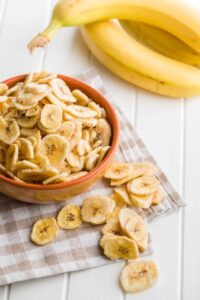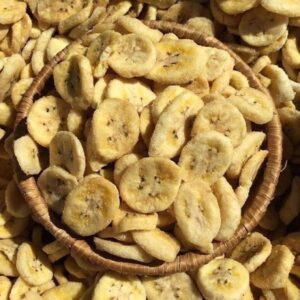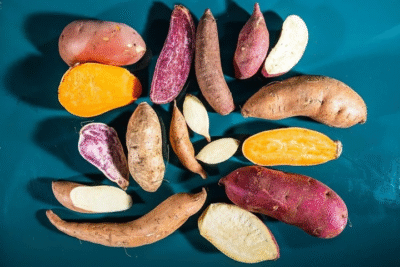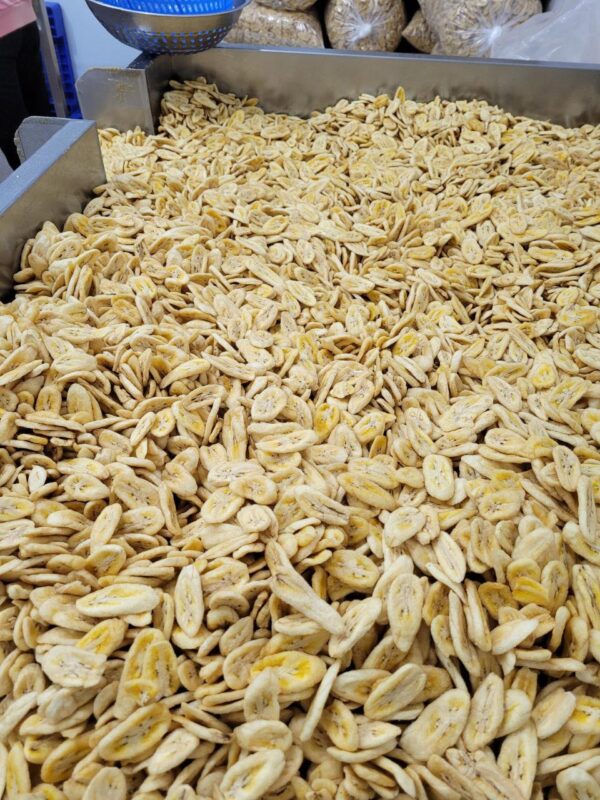Last updated on October 28th, 2025 at 05:36 am
Introduction
Vietnam produced an estimated 2.64 million tons of bananas in 2023, according to FAO data. This abundant supply of fresh bananas makes the country one of Asia’s best sources for dried banana exports. For B2B importers, selecting the right dried banana supplier involves evaluating food-safety certifications, production capacity, and consistent product specifications.
Qualitex Global is recognized as one of Vietnam’s trusted suppliers, providing dried banana products that meet global import standards.
Explore available varieties on the Qualitex Dried Banana Product Page.
Vietnam’s Strength in Dried Banana Supply
Vietnam has more than 130,000 hectares of banana plantations, mainly in the Mekong Delta and Southeast regions. The Cavendish variety accounts for over 80 % of total production due to its high yield and sweetness. The average yield of banana farms in Vietnam ranges from 35–45 tons per hectare, according to FAO Agricultural Data 2024.
These favorable conditions allow suppliers to maintain a year-round supply of raw materials, ensuring consistent export performance.
To learn more about banana cultivation areas, visit Top Regions High-Quality Green Bananas in Vietnam.

What to Look for in a Reliable Dried Banana Supplier
When evaluating dried banana suppliers, B2B importers should prioritize specific technical standards and operational capabilities:
| Evaluation Factor | Why It Matters | Verification Step |
|---|---|---|
| Certification (HACCP, ISO 22000) | Confirms globally recognized food-safety management. | Request copies of certificates and audit dates. |
| Moisture & Sugar Levels | Ensures correct taste, shelf life, and stability. | Supplier QC should maintain ≤ 12 % moisture and sugar 55–60 g/100 g. |
| Production Capacity | Determines scalability for OEM/private label. | Verify monthly production tonnage and peak season output. |
| Traceability | Reduces sourcing risk through full documentation. | Request batch traceability and raw-material origin proof. |
| Export Documentation | Facilitates customs clearance in destination markets. | Ensure provision of Certificate of Origin and Phytosanitary Certificate. |
Working with a compliant supplier saves time and reduces shipment rejection risk.
See more on compliance at Dried Banana Supplier Wholesale Page.
Specifications for Export-Grade Dried Bananas
| Parameter | Standard Specification |
|---|---|
| Moisture Content | ≤ 12 % |
| Total Sugar | 55–60 g / 100 g |
| Potassium | 400–450 mg / 100 g |
| Fiber | 7–9 g / 100 g |
| Shelf Life | 12 months (< 25 °C, < 60 % RH) |
| Packaging | 500 g, 1 kg, 5 kg vacuum packs |
According to the USDA FoodData Central, dried bananas retain about 65 % of their vitamin B6 and 70 % of potassium after dehydration.
Learn about the nutrition benefits at Dried Banana Chips Health Benefits.
Quality Assurance and Food-Safety Systems
Top-tier suppliers in Vietnam follow internationally recognized systems such as HACCP and ISO 22000. The World Health Organization defines HACCP as a preventive food-safety management method focusing on controlling hazards across production stages.
A typical factory procedure includes:
- Raw banana selection (≥ 17° Brix).
- Uniform slicing (3–5 mm).
- Controlled dehydration at 45–50 °C.
- Microbiological testing for E. coli and Salmonella.
- Nitrogen-sealed packaging to maintain texture and aroma.
For more technical insight, visit How to Make Dried Bananas.
Step-by-Step Process to Import from Vietnam
- Submit a detailed inquiry with desired specification and volume.
- Request sample batch (200 – 500 g) for testing.
- Review HACCP and ISO certificates.
- Confirm contract terms (lead time 18–30 days typical).
- Monitor production and packaging approval.
- Final inspection before shipment.
- Handle export documentation under FOB or CIF terms.
These steps ensure a smooth import experience for distributors and brand owners.
Read about export compliance at Export Banana Packaging Vietnam.
Sustainability and Traceability
Qualitex Global works with farms applying VietGAP standards. The Vietnam Ministry of Agriculture (2024) reports that VietGAP farms use 30 % less fertilizer while maintaining consistent yields and environmental protection.
Each production batch is QR-coded for full farm-to-factory traceability. This transparency strengthens importer confidence and facilitates retail audits.
Discover more about sourcing practices at Why Vietnam’s Cavendish Bananas Are in Demand.
Storage and Handling
To maintain optimal quality during transport and storage:
• Keep at ≤ 25 °C and below 60 % RH.
• Avoid sunlight or open exposure to air.
• Store in a cool, dry warehouse with limited humidity variation.
Following these conditions maintains shelf life up to 12 months.
Read more at How to Store Banana Chips.
Conclusion
Vietnam has established itself as a major base for dried banana production thanks to its high yield, ideal tropical climate, and expanding export infrastructure. As one of the country’s top certified suppliers, Qualitex Global offers consistent quality, verified testing, and tailored OEM/ODM solutions.
If you want to import dried bananas from Vietnam for private label, bulk, or custom packaging, consider Qualitex Global as your OEM/ODM manufacturer. For inquiries about importing premium dried banana products, contact Qualitex Global.
FAQ Section
Q1: What certifications should a dried banana supplier provide?
A reliable supplier should be certified under HACCP and ISO 22000 standards, ensuring preventive safety control, traceability, and compliance with export regulations.
Q2: How long can dried bananas remain fresh?
When processed to specification (moisture ≤ 12 %), nitrogen-packed, and stored below 25 °C in dry conditions, dried bananas stay fresh for up to 12 months.
Q3: What is the ideal moisture content for export-grade dried bananas?
The ideal moisture content is ≤ 12 %. Levels above 13 % risk microbial growth and texture softening during transport.
Q4: Can I order private-label dried bananas from Vietnam?
Yes. Suppliers such as Qualitex Global offer OEM/ODM options, enabling buyers to specify pouch size, label design, and branding for retail packaging.
Q5: Why is traceability important for importers?
Traceability allows verification of raw-material source and processing history. This reduces quality risk and meets documentation needs of import regulations and retailers.









